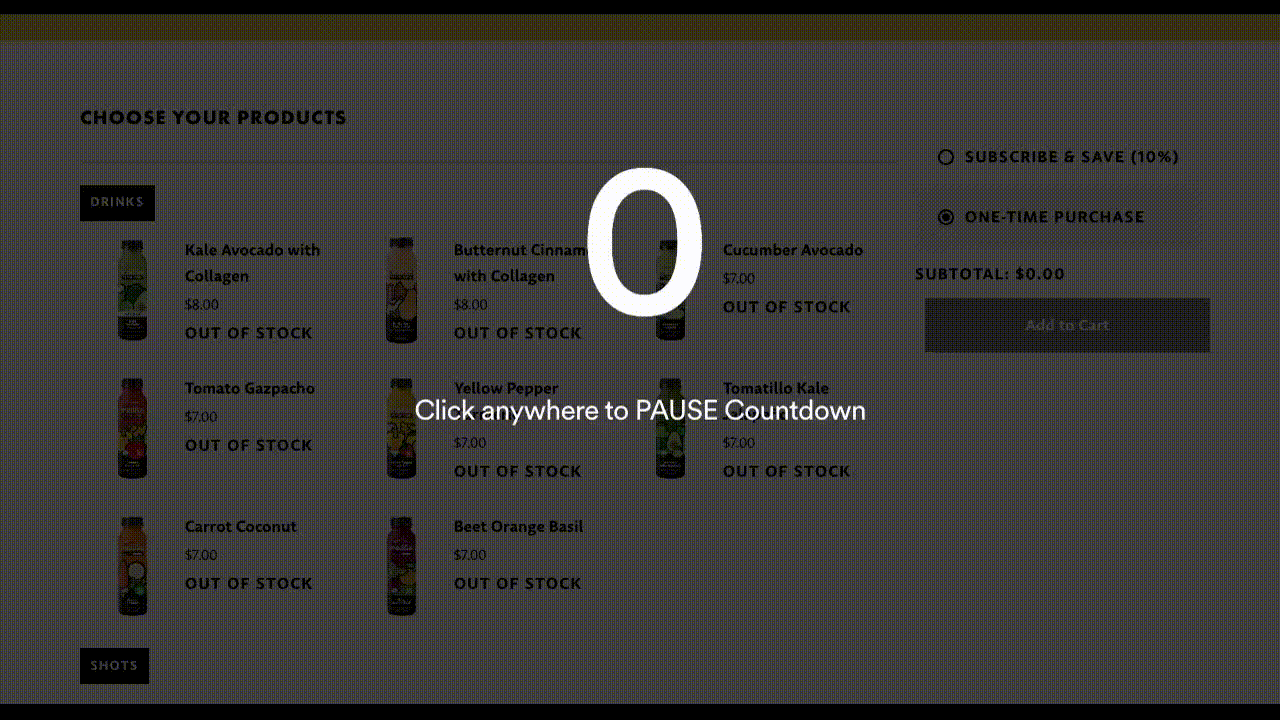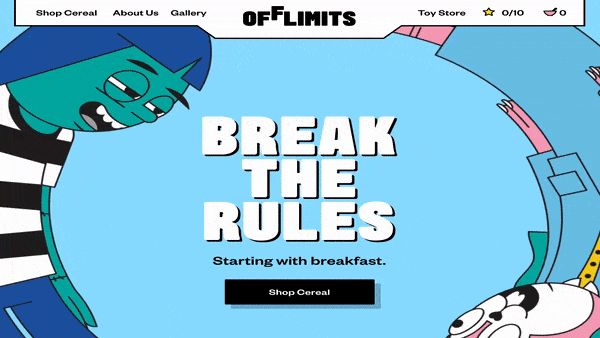How to Turn your eCommerce Product into a Subscription
75% of all DTC brands will be subscription-based in 2023. Here are all the tools, apps, and strategies you need to scale your ecommerce subscription business.
Updated November 6, 2024

People love convenience.
They don’t want to go to the store every month to refill on the necessities when they can just buy it online, with one click. And better yet, when they can order a subscription box and receive their products on a regular basis without having to think about it.
Subscriptions offer a personalized experience, convenience, and often a better bargain.
Over the last 7 years, we’ve seen the subscription economy grow more than 300%. In fact, subscription business revenues grow 5 times faster than those of S&P 500 companies.
Studies show that 15% of American shoppers are subscribed to eCommerce subscription boxes and that number is only going to increase. Experts predict that 75% of all DTC businesses will offer subscriptions by 2024.
How did eCommerce subscriptions even start?
The earliest known eCommerce business was the Sampler and it appeared in 2004. It was a simple service that offered monthly samples from crafters and indie record labels.
Then, Birchbox was launched in 2010 as a cosmetics monthly sample box service and really hit it off. It grew over 45,000 members in under a year and was once valued at half a billion dollars. It was the first successful example of a subscription box in the history of eCommerce.
Over the last few years, we've seen the rise and fall of different subscription-based eCommerce brands with the popularization of “the Birchbox of X” business model. Subscription businesses are really hard to build but have some really powerful advantages.
Here are a few.
Why should you have a subscription-based product?
The eCommerce subscription model is a business model in which a company provides ongoing services on a regular basis in exchange for regular payments from the customer. Nowadays, companies in the fashion, entertainment, and even food industries adopt this approach into their overall operations.
An eCommerce subscription company sells its products on a recurring basis online. Typically, it sells and ships products to customers on a monthly or quarterly basis. It leverages the power of these recurring customer relationships to provide everything from razors to computer software.
An eCommerce expert or agency will tell you to simplify your product offering and not bother with subscription-based products but there are a ton of benefits if you can make it work. Here are the main ones.
Increase your customer lifetime value (CLV)
The most important benefit of offering a subscription product is how much it increases your Customer Lifetime Value (CLV).
The CLV refers to the value that each customer brings to the business, and the more each customer purchases the better obviously.
Think of brands like Starbucks and DollarShaveClub, where customers re-purchase constantly. This is what a high CLV in action looks like.
Decrease your customer acquisition cost (CAC)
On the flip side, a higher CLV means a lower customer acquisition cost (CAC) because you are effectively spending less money on acquiring new customers. And you can now invest in other eCommerce marketing channels like influencer marketing, PR, or TikTok.
Get a steady stream of revenue
Another powerful benefit of having a subscription product is that you know how much money is coming in every month, which can help you streamline the financial side of the business.
And since you get paid upfront every month, you can plan out your purchasing and fulfillment operations much better. It also means that you know how much to invest in long-term growth.
Increase your brand loyalty
A subscription product offers more convenience and personalization to the user. The brand-customer relationship isn’t purely transactional because the customers are really members and that involves a higher degree of trust.
The brand can use membership perks and rewards to increase the loyalty of their membership base and bring more referrals and organic growth.
3 types of subscription boxes
If you already have a thriving eCommerce business and are thinking about launching a subscription product and are not sure where to start, here’s a quick way of thinking about it. You have three main types of subscription products you could offer.
Replenishment subscription box
This type of subscription box is used for replenishing or restocking a necessary product. Think of razors, toiletries, food, tea, or coffee. Brands that use the replenishment model include the Dollar Shave Club, Bean Box, Mistobox, Raw Spice Bar, CandyClub, and SnackNation.
Curation subscription box
This is a subscription box that contains a collection of products. It’s both exciting to discover new products and convenient to have everything you need in one box. Examples of curation subscription products include StitchFix, BeardClub, Say it with a Sock, BirchBox, IPSY, and BreoBox.
Access subscription box
This is where a consumer signs up to receive access to certain products that they wouldn't have access to generally. These could be luxury products that are hard to find or products in bulk quantities with a hefty discount attached. Examples include Thrive Market, FabFitFun, Vices, OuiPlease, and the Gentleman’s Box.
Top Subscription mistakes to avoid
Subscription businesses are all fun and games until someone goes bankrupt. So here are the top rookie mistakes that you should avoid.
Again, a lot of these won’t apply to you if you have an existing eCommerce business and are just adding a subscription product to it. But you should still be cautious and aware of these potential mistakes:
1. Trying to build your own billing system
The “build vs buy” debate has raged on for years but now that we have all of these subscription tools and Shopify plugins there really is no need to build your own billing system. Use an app like Chargify and set it all up in minutes.
2. Not validating your idea
Seems like an obvious one doesn’t it? But there’s a greater risk of launching a subscription product because you have to buy everything in bulk quantities. So think about launching a Kickstarter campaign first and see if you have a demand for it.
3. Not being 100% focused on the customer experience
A subscription box is a membership which means there is much greater loyalty and a much greater expectation. Customers that subscribe to your product expect an easy return program, quick response times, and exclusive rewards. In order to start on the right foot, you have to focus on the customer experience 100%.
4. Underpricing your subscription product
Subscription products tend to be more expensive when they first launch until they pick up steam. So be conservative, don’t underprice your product just because you are not getting enough demand. Create a comprehensive marketing strategy, validate your product, service your customers, and you will win in the long term.
A classic case of underpricing happened with Birchbox. They were making $200M in annual revenue and had still not been profitable. Their product was selling for $10/month and their combination of the low price, the sped-up growth, and hiring mistakes landed them on the rocks.
Hybrid eCommerce subscription models
So even though subscription businesses sound appealing because of their predictable revenue they can be really hard to grow and sustain in the long term. That’s why a lot of eCommerce brands are using a new approach.
The idea is to only launch one subscription product at a time, as a membership offer to increase customer loyalty. This could be a replenishment box for the necessities or an access box that gives exclusive access to special products, bundles, or promotions.
For example, Gillette has a successful eCommerce presence and is one of the top men's shaving brands in the world. Recently it launched a subscription product that’s $14/mo and offers a regular replenishment of shavers and blades every month.
The one-time product model
Over the last 10 years, we’ve had over 150+ subscription brands launch in the US and the novelty element is wearing off. People are becoming hesitant to subscribe to and commit to something new. A great solution for brands is to offer the ability to order something once, to try it out, before committing to a monthly subscription.
This is called a one-time product feature and subscription apps like Recharge offer it for Shopify stores. Brands like Native and Medlie offer it for their audiences with great success.
Native was acquired by P&G in 2017 for $100M. It makes skincare and health products for men and women and has recently started to offer them as a one-time purchase.
Medlie is a superfood juice brand that’s doing the same thing. You can buy a veggie shake or superfood shot as a one-time purchase or build your own crate and get these regularly every 14, 30, or 60 days.
The membership model
Another great way to reap the rewards from the benefits of having a subscription product and minimize risks at the same time is to use the membership model. This is where you launch a membership that offers exclusive discounts to the customer and access to specialty products.
The main advantage here is that you’re not offering a box of products every month but more a discount on one-time product purchases. So it’s much easier to remain profitable and minimize the risk of underpricing a bundle of products.
This is exactly what Pela did.
Pela is a brand that sells phone accessories made out of recycled products. They look beautiful but they also help save the environment. The brand launched a membership program called The Collective where a customer would pay $4.95 per month in exchange for a 30% discount on all products and exclusive access to new product launches.
They were able to get 7,000 subscribers in 2 months which increased their LTV by 50% compared to non-subscribers. That’s $34,650 in monthly revenue or $400K+ per year.
Word of caution: in the membership model the customer pays for access to products and not an actual bundle of products, so brands usually need to have a greater cause that they contribute to and stand for to get customers excited enough to subscribe.
So if you wanted to try launching a new subscription product or offering a one-time purchase for your existing subscription box, how would you do it?
Here are the top tools to use.
Top subscription tools
ReCharge
ReCharge is one of the most popular tools to manage subscription products. It lets brands offer a single purchase or a “subscribe and save” option on the product page. The customer can then choose the subscription frequency and there’s a customer portal that lets the customer manually manage every aspect of their subscription.
Recharge is available for Shopify, Magento, BigCommerce, and WooCommerce, and only costs $60/mo + 1% & $0.05 per transaction.
Bold
Bold is a company that has several Shopify apps, as well as an incredible subscription app. The app has similar features to Recharge - one-time vs subscription products, subscription frequency, and a full-customized customer portal.
There is also a feature that lets customers purchase a combination of subscription and one-time products as well as prepaid and gift subscriptions.
Bold Subscriptions is only available for Shopify and costs $39.99/month + 1% per transaction with a Pro plan that starts at $199/month.
PayWhirl
PayWhirl is another great app that works for Shopify and BigCommerce. It has a lot of the same features as the other apps that we mentioned although it’s a little cheaper and has a few different integrations you could use like Stripe and Braintree.
PayWhirl works for Shopify and BigCommerce stores and starts at $9/mo + 2%. Notice that there are no transaction fees.
Examples of top subscription brands
Here are a few of the best eCommerce subscription brands.
Coffee Bean & Tea Leaf
Coffee Bean started as a physical coffee house company with hundreds of locations across the US and eventually, they launched an online Shopify store.
When the subscription box revolution started happening they launched an online subscription product + a gift card system, and it took off. They were able to triple their online sales and increase AOV by $5.
Oatly
Oatly is the famous milk alternative, a product made out of oats! They’ve launched at all the major grocery stores and national food chains and wanted to step it up a notch.
So they launched a subscription box offering their customers convenience and affordability of getting their favorite milk alternative straight to their door. In a short time, they were able to grow their monthly revenue by 188%.
Offlimits
Offlimits is a really quirky cereal brand that promotes diversity through some really interesting art and unusual-looking characters on their cereal boxes. It’s also made of oat and coconut flour so it’s a much healthier alternative to the run-of-the-mill cereal that we’re all used to. They also have a really unique site experience, check it out.
Loverly
Loverly is a baby toy company that offers a monthly subscription toy kit. The brand is all about fostering healthy development and education. They grew by 3,000 subscribers in 3 months and by 2000% in one year after implementing a Shopify subscription app.
Hubble
Hubble is a prescription lenses company similar to Warby Parker, just for lenses. It launched in 2016 and today it offers FDA-approved daily contact lenses for $30 per month - straight to your doorstep. That’s a pretty good deal! They grew to more than 17,000 customers and annual revenue of $12M.
Fresh Clean Tees
Fresh Clean Tees is a company that started to innovate the men's fashion space and create the most comfortable tees that anyone has ever seen, combined with the convenience of getting a new one every month. Their slogan is “gotta keep it fresh”. They were able to grow to almost $1M in revenue.
Bokksu
Bokksu is a subscription box for authentic Japanese snacks started by a solopreneur. It quickly grew to over 10X year over year growth and has sent over 2+ million snacks in 70 different countries.
Minky Couture
Minky Couture was founded in 2009 by a mom that started making comfy blankets for her baby. Her hobby grew into a large brand with a huge following. The brand donates thousands of blankets every year to hospitals, charities, and fundraisers around the country (read: strong brand values so a membership model makes sense).
Minky Couture launched the Hugs Membership Program for $20/mo and was able to acquire 3,000 new members in the first 3 months of launching the program, and have seen an average order value of $152. That’s a value of over $1M+ in annual membership revenue and product sales.
Recap
The eCommerce subscription business model is the way of the future. It provides an opportunity for unprecedented growth, increased brand loyalty, and a lot of stability for an eCommerce brand. On the flip side, it does come with some risks. And those risks are mitigated by choosing a hybrid subscription model - one-time products or memberships.
There are a ton of really powerful subscription tools you can use regardless of the platform that your store is hosted on, and it’s never been easier to enter the market and launch a box or membership.
Hope you enjoyed the guide, please leave us a comment if you have any questions. And as always, if you need help growing your eCommerce brand, we’re here for you.
























